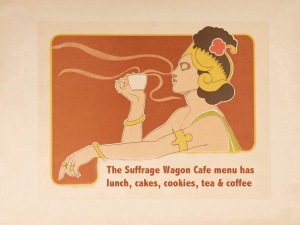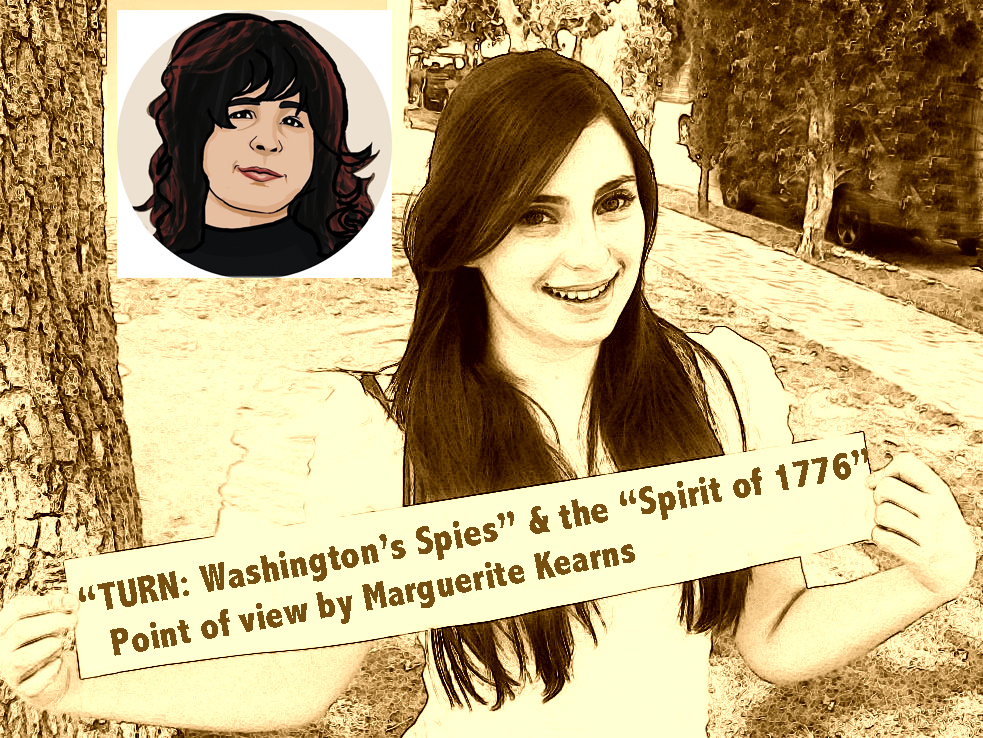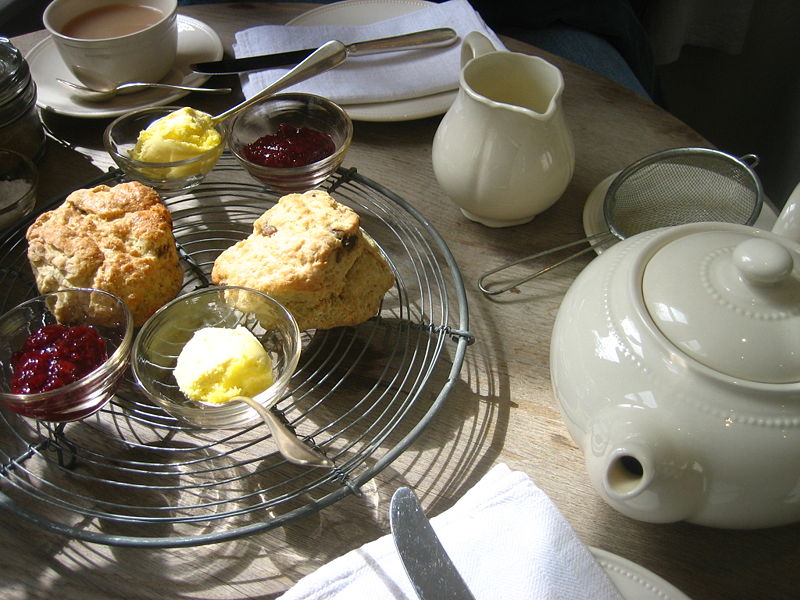VIDEO: TURN: Washington’s Spies shows Long Island in 1777 and Suffrage Wagon Cafe program shows what happened 100+ years later on Vimeo.
“TURN: Washington’s Spies” Has “Spirit of 1776” Suffrage Wagon Wrinkle by Marguerite Kearns
Activist Rosalie Jones was a loose cannon on Long Island back in 1913. She was controversial in public and in her own family. Rosalie Jones appeared often in the newspapers for her stunts and unusual Votes for Women demonstrations, such as marching to the state capitol and demanding to see the governor in 1912 and 1914. Without Rosalie Jones, we wouldn’t know that after more than 100 years after the American Revolution, some people on Long Island still supported English King George III.
A NEW TAKE ON AMERICAN HISTORY
Back in school, no teacher ever mentioned that during the war for independence significant numbers of Americans identified themselves with the British. Nothing demonstrates this more clearly today than Long Island as portrayed in the A&E television series, “TURN: Washington Spies” that goes into its second season on April 13, 2015. The tensions within Rosalie Jones’ own family on Long Island made the issue of Tory loyalties simmer and spill into the public arena in 1913.
If it hadn’t been for the “Spirit of 1776” suffrage wagon and its 1913 journey for Votes for Women organizing on Long Island, the continued polarization of the population might not have come to light. This confrontation in Huntington, NY is featured in this special article I wrote for New York Archives.
THE PLAYERS IN THE 1913 CONTROVERSY BETWEEN TORY AND PATRIOT DESCENDANTS
The players in July 1913: Suffrage activist Edna Kearns who drove the horse-drawn wagon called the “Spirit of 1776” into Huntington, NY and Mary Livingston Jones, the mother of suffragist Rosalie Jones. Mrs. Jones identified herself as the descendant of Long Island Tories and demanded the activists stop immediately in their use of the “Spirit of 1776” wagon. Edna Kearns told a Brooklyn Daily Eagle reporter (who covered the incident) that Mrs. Jones’ tirade made her fear for her life.
Mrs. Jones insisted the old horse-drawn wagon had been in the possession of Tory descendants the previous century, and she threatened legal action against the New York State Woman Suffrage Association for misrepresenting its history. The confrontation at the Huntington, NY parade had been provoked, no doubt, by the disagreements suffragist Rosalie Jones had with her mother and sister. Jones family members considered themselves the elite of Long Island for their long-time residency and old money. Rosalie didn’t view the Tory position and the anti-suffrage position as linked together. Her mother and sister did, however. In a 1913 article from the Brooklyn Daily Eagle, Mrs. Jones spoke of Tories and their prominence on Long Island as if the war for independence just happened yesterday.
WHY THE SECOND SEASON OF A&E’s “TURN” IS A GREAT TIME TO REVIVE THE SPIRIT OF 1776 STORY . . .
Long Island was divided in loyalties in 1776. A significant number of colonial sympathizers moved away after the Battle of Long Island. And the island became even more entrenched in loyalist support in the aftermath of the British capture of New York City. This was well portrayed in “TURN: Washington’s Spies” during its 2014 first season, enough for the intrigue and spy thriller to hook two million Americans and have them glued to their TV sets. So the TV series going into its second season performs a much-needed service of expanding the understanding of American history, even if some of the details have been crafted to meet the storytelling requirements of Hollywood.
Mrs. Mary Livingston Jones halted the Votes for Women parade in July 1913 with her claim that the “Spirit of 1776” wagon had been in the possession of her ancestors, the Hewletts, before the suffrage movement decided on the vehicle’s use for grassroots organizing on Long Island. It was, therefore a Tory icon, not a patriot one, Mrs. Jones insisted.
The suffragists disagreed and proceeded to carry their own message of patriotic protest to towns and villages all over Long Island during the summer of 1913. More than 20 newspapers, including the New York Times, covered the splash caused by the “Spirit of 1776” wagon and its supporters at suffrage demonstrations, rallies, and special fundraising events. See representative media. No legal action resulted, despite Mr’s Jones’ threats. Without the confrontation in Huntington, NY, we wouldn’t be privy to the fact that Long Island remained polarized between loyalists and patriots, on some level at least, more than a century after the end of the war for independence.
COLONEL HEWLETT PORTRAYED AS NICE GUY, IN THE WRONG PLACE AT THE WRONG TIME
If you’ve been following “TURN: Washington’s Spies,” the Hewlett name should be familiar to you. He’s the TV character wearing a red British uniform, not a bad guy actually –more like a decent guy in an extremely awkward situation. It’s not politically correct these days to make our former enemies, especially the English, look too bad. This happened back in 1917 with filmmaker Robert Goldstein, and a controversial trial that sent Goldstein off to federal prison for ten years. U.S. President Woodrow Wilson later commuted Goldstein’s prison sentence to three years. But the filmmaker’s crime had been specific: making the English look like brutes during the war for independence in his silent film, a crime not addressed under the First Amendment during World War I.
A 1913 Long Island history clearly identifies the Hewletts as the largest and most powerful of all Tory families on Long Island. So it shouldn’t have been necessary for the TV series to import a Hewlett from England to wear a red coat. In actuality, Hewlett represented a well-known household name for Tory support on Long Island. Hewlett family members remained on Long Island after the American war for independence after they officially declared their loyalty to the new nation.
DID THE TORY CONVERSIONS TO THE NEW NATION MAKE PEOPLE FORGET THEIR PREVIOUS LOYALTIES?
Pressures to become patriots didn’t make the Hewletts revolutionaries overnight any more than the threat of death convinced many Jews to willingly convert to Christianity at the time of the Inquisition. This had been Mrs. Jones’ point (indirectly) when she confronted the suffrage activists on the streets on Huntington, NY in July 1913, a perspective preserved by the Brooklyn Daily Eagle reporter’s account. Mrs. Jones made it clear that her relatives, the Hewletts, resented being linked to the colonial cause.
Long term, the Hewletts’ conversion to patriots seems to have been enough for family members to continue living on Long Island after the American Revolution without limping around, tails between their legs. Later, Hewlett family members became the source for stories told to the suffrage activists that the “Spirit of 1776” wagon had been a symbol of patriotism, not Tory loyalties. The suffragists took advantage of the opportunity to spread this patriotic protest message in 1913. Patriotic protest had been a key theme of the suffrage movement going back to 1848 when the Seneca Falls, NY signers of the Declaration of Sentiments linked their civil rights struggle to the spirit of 1776 and the American Revolution. In 1913, Edna Kearns and other activists dressed in colonial costumes and milked the patriotic protest theme for all it was worth in the cause of votes for women.
But the Hewletts couldn’t shed their loyalist associations easily. The state education department, back when the agency was in charge of historical street markers, produced one marker to stand in front of the home of Richard Hewlett in Rockaway, NY. There, Richard Hewlett was acknowledged as the local Tory who planned the capture of General George Washington. Long Island newspaper accounts during the 1920s suggested that Tory loyalties and the threats on the life of George Washington were, in the opinion of many local residents, best forgotten. But with the second season of “TURN: Washington’s Spies,” we’re treated to a new spin on an old story.
RESOURCES: Videos about Rosalie Jones demonstrate how her support for Votes for Women might have annoyed her mother and sister who were avid supporters of the state and national anti-suffrage cause. “Rosalie Jones and her band of activists marched to Albany, NY in January 1914″; “Rosalie Jones’ hikes to Albany get people’s attention”; “Rosalie Jones; High-Profile Long Island Suffragist.”
 Follow Suffrage Wagon News Channel on Facebook and Twitter. Quarterly newsletters just by signing up. Suffrage Wagon News Channel has video platforms on Vimeo and YouTube.
Follow Suffrage Wagon News Channel on Facebook and Twitter. Quarterly newsletters just by signing up. Suffrage Wagon News Channel has video platforms on Vimeo and YouTube.
Meet your friends at the Suffrage Wagon Cafe. Follow SuffrageCentennials.com for news and views about upcoming women’s suffrage centennial events and celebrations.
“Choose it and Use it” is a video reminding us of how the past is linked to what we do today and its impact on the future.



0 Comments